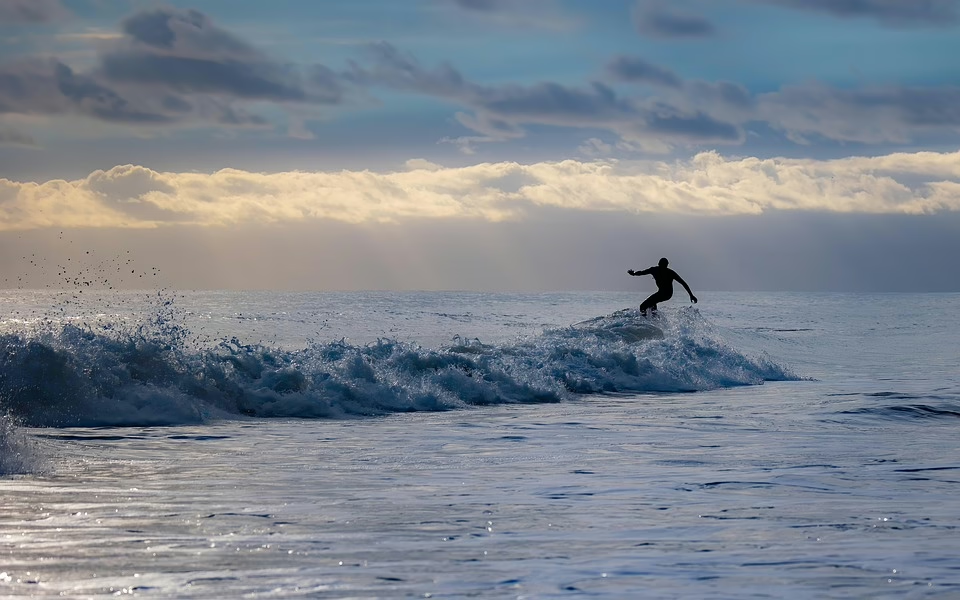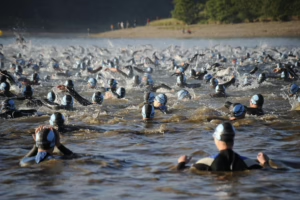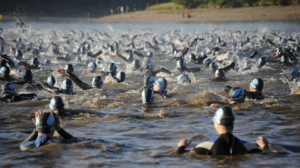A Beginner’s Guide to Getting Started in Air Sports
Air sports encompass a wide variety of activities that involve flying through the atmosphere, whether it’s through the use of aircraft, parachutes, or hang gliders. For many, the appeal lies in the freedom of flight and the thrill of gliding through the sky. This article serves as a comprehensive guide for beginners looking to venture into air sports, covering various disciplines, necessary equipment, training requirements, and safety considerations.
1. Understanding Air Sports
Air sports can be broadly categorized into two groups: powered and unpowered flying. Powered flying includes activities such as piloting airplanes, helicopters, and ultralights, while unpowered flying encompasses activities like paragliding, hang gliding, and skydiving. Each discipline has its unique allure and challenges.
1.1 Types of Air Sports
-
Skydiving: Jumping from an aircraft and free-falling before deploying a parachute.
-
Paragliding: Launching from a hill or mountain and gliding down using a fabric wing.
-
Hang Gliding: Similar to paragliding, but pilots fly with a rigid wing structure.
-
Powered Paragliding (Paramotoring): Using a small motor attached to a paraglider for powered flight.
-
Ultralight Aviation: Flying lightweight, simple aircraft without the need for a full pilot’s license.
-
Aerobatics: Performing aerial maneuvers in powered aircraft.
-
Gliding: Soaring in a sailplane, which has no engine, and using thermals for lift.
2. Choosing the Right Discipline
Deciding which air sport to pursue can be overwhelming, given the variety of options available. Consider your interests, physical condition, and financial budget as you make your choice.
2.1 Physical Fitness
Most air sports require a reasonable level of fitness. While you don’t need to be an athlete, overall health, flexibility, and coordination can improve your experience:
- Skydiving: Requires basic strength and mobility to handle gear and land safely.
- Paragliding and Hang Gliding: Involve hiking to launch sites, requiring stamina and good physical condition.
- Aerobatics: Demands strong core muscles for controlling the aircraft during maneuvers.
2.2 Cost Considerations
Air sports can range from budget-friendly to high-end. Here’s an overview of estimated costs for each:
- Skydiving: Tandem jumps or introductory courses can cost anywhere from $150 to $300.
- Paragliding: Initial costs for gear and training can exceed $3,000.
- Ultralight Aviation: An ultralight aircraft can be purchased for as little as $5,000 to $20,000.
3. Getting Started: Training and Licensing
Regardless of the discipline you choose, training is essential. Each air sport has its educational requirements and certification processes.
3.1 Skydiving Training
Most individuals begin their skydiving journey with a tandem jump. After the first jump, you may opt for the Accelerated Freefall (AFF) program, which typically includes:
- Ground training (4-6 hours)
- Multiple jumps with instructors
- Solo jumps as skills progress
Certification comes through organizations such as the United States Parachute Association (USPA).
3.2 Paragliding Training
For paragliding, begin with an introductory course provided by a certified school. Training usually involves:
- Ground school covering theory and equipment usage
- Hands-on practice with an instructor
- Solo flights once enough skills are gained
Look for schools endorsed by organizations like the Association of Paragliding Pilots and Instructors (APPI).
3.3 Ultralight Aviation
Ultralight aircraft require less regulatory oversight than traditional aircraft. Though a specific license isn’t mandatory, training is still crucial:
- Training programs will cover operation, safety, maintenance, and navigation.
- It’s advisable to seek instruction from recognized ultralight schools to ensure safety.
4. Essential Gear and Equipment
Each air sport requires specialized gear. Acquiring the right equipment, whether rented or purchased, is crucial for safety and performance.
4.1 Common Gear for Air Sports
- Skydiving: Jumpsuit, helmet, altimeter, and parachute system.
- Paragliding: Wing (paraglider), harness, reserve parachute, helmet, and variometer.
- Hang Gliding: Hang glider, harness, helmet, and basic navigation tools.
- Ultralight Aviation: Aircraft, flight suit, helmet, and emergency parachute.
4.2 Purchase vs. Rent
Many beginners start by renting gear from their training schools. This is a great way to try various equipment types without a hefty investment. Once you’ve chosen your preferred air sport, consider investing in your own gear, as it can provide better performance and comfort.
5. Safety Considerations
Air sports, by their very nature, carry risks. Proper training, adherence to rules, and use of safety gear are essential.
5.1 Understanding Risks
Each air sport comes with its inherent risks:
- Skydiving: Risks include parachute failure and injury during landing.
- Paragliding: Weather conditions are a significant factor, and wind shear can lead to accidents.
- Ultralight Aviation: Technical mechanical failure may result in emergencies.
5.2 Safety Tips
- Always check weather conditions before flying.
- Familiarize yourself with the equipment and ensure all gear is in good condition.
- Attend safety briefings and heed your instructor’s advice.
- Maintain a discipline of continuously improving skills.
5.3 Emergency Procedures
Part of your training in any air sport should include emergency procedures. Knowing how to react in case of equipment failure or challenging situations will greatly enhance your safety and confidence.
6. Joining the Community
One of the most rewarding aspects of air sports is becoming part of a community. Connecting with fellow enthusiasts can provide support, training, and camaraderie.
6.1 Finding Local Clubs or Schools
Locating a local club or school can enhance your learning experience. Many clubs offer group training sessions, social events, and opportunities for shared flights:
- Online Forums: Websites like Skydiving.com or paragliding forums can help you find local chapters.
- Social Media Groups: Platforms like Facebook have groups for skydivers and paragliding enthusiasts to share tips and organize events.
6.2 Networking and Events
Participating in air sports events such as competitions, festivals, or fly-ins can increase your skills and enjoyment:
- Competitions provide a platform to showcase your abilities and meet like-minded people.
- Fly-ins allow pilots to gather at one spot, sharing experiences and stories in the air.
7. The Journey Ahead
Embarking on a journey into air sports is not merely about the thrill of flying; it’s a blend of precision, training, and community. Whether it’s the adrenaline rush from skydiving or the serene experience of paragliding, the skies offer endless exploration.
7.1 Beyond the Basics
Once you gain confidence and experience in your chosen sport, you may want to expand your skills or try new disciplines:
- Advanced Training: Consider more challenging courses, such as acrobatic training or cross-country flying.
- Exploring Other Disciplines: If you start with skydiving and enjoy it, consider transitioning into wingsuit flying or BASE jumping as your skills improve.
7.2 Continuous Learning
Air sports are constantly evolving with technology and safety practices. Stay informed:
- Subscribe to magazines or online publications focused on air sports.
- Attend workshops, seminars, and training sessions to keep your skills sharp.
7.3 Enjoying the Experience
Most importantly, enjoy the journey! The possibilities for adventure and the exhilaration of soaring through the skies create unforgettable memories. Whether you’re flying solo or with friends, the connections you make and experiences you gain will last a lifetime.
Conclusion
Getting started in air sports is a thrilling journey that combines training, safety, community, and a passionate pursuit of flying. By understanding the various disciplines, selecting the right training programs, investing in appropriate equipment, and prioritizing safety, you can enjoy the incredible feeling of flight.
As you embark on this fantastic adventure, remember that learning to fly takes time and patience. With persistence, you’ll develop the skills necessary to soar through the skies and embrace the world of air sports.
Sources:


























Add Comment